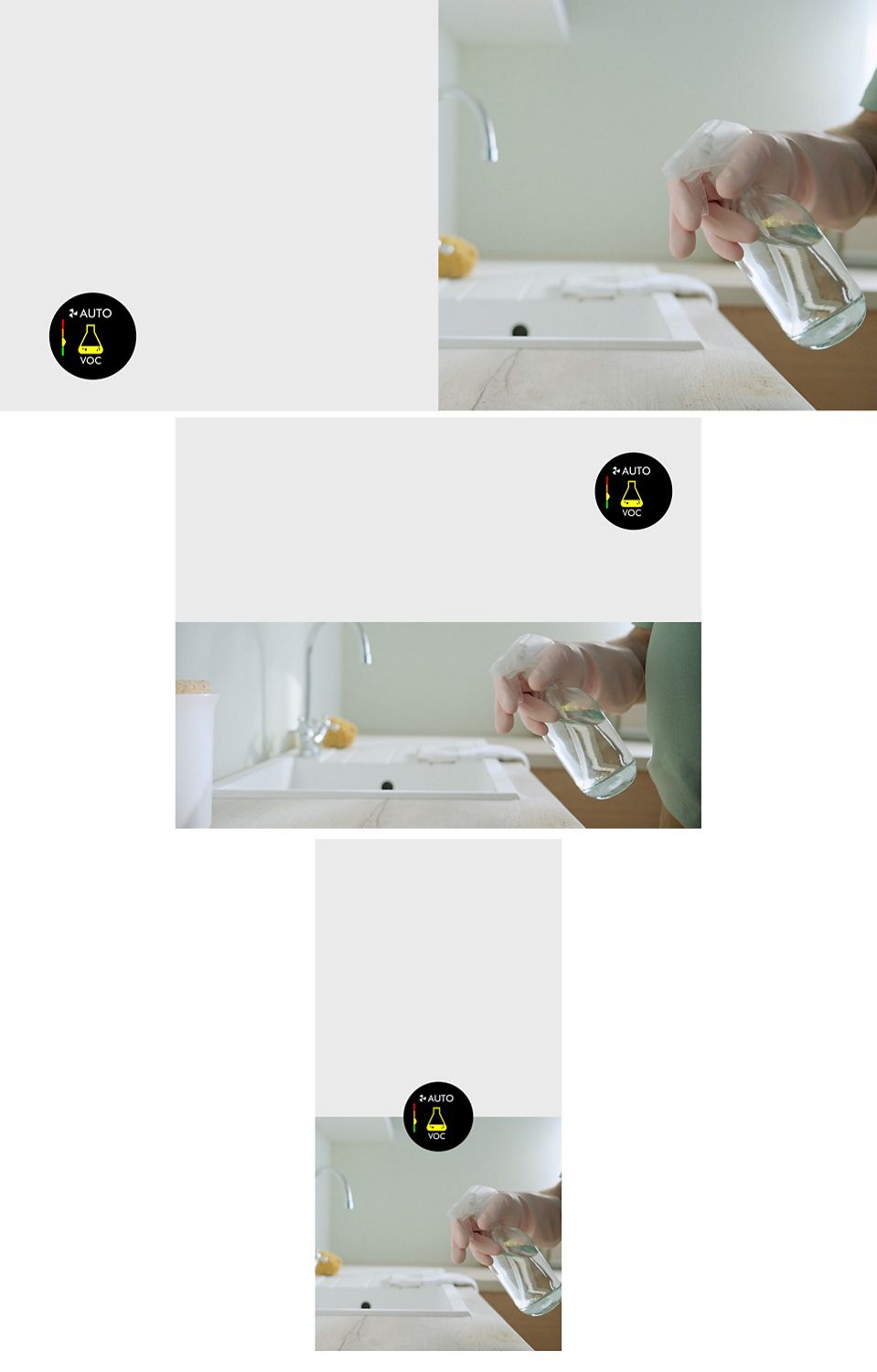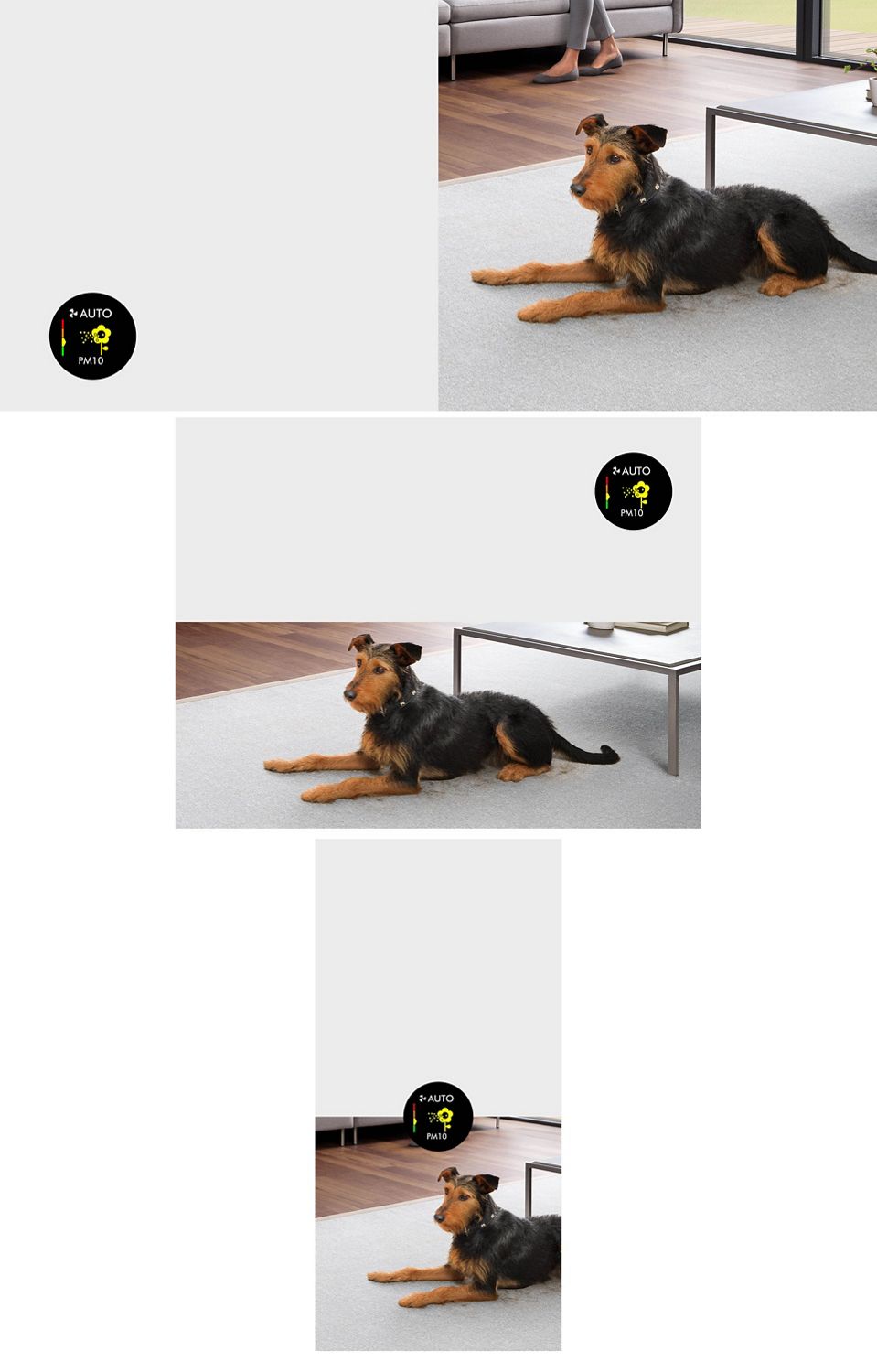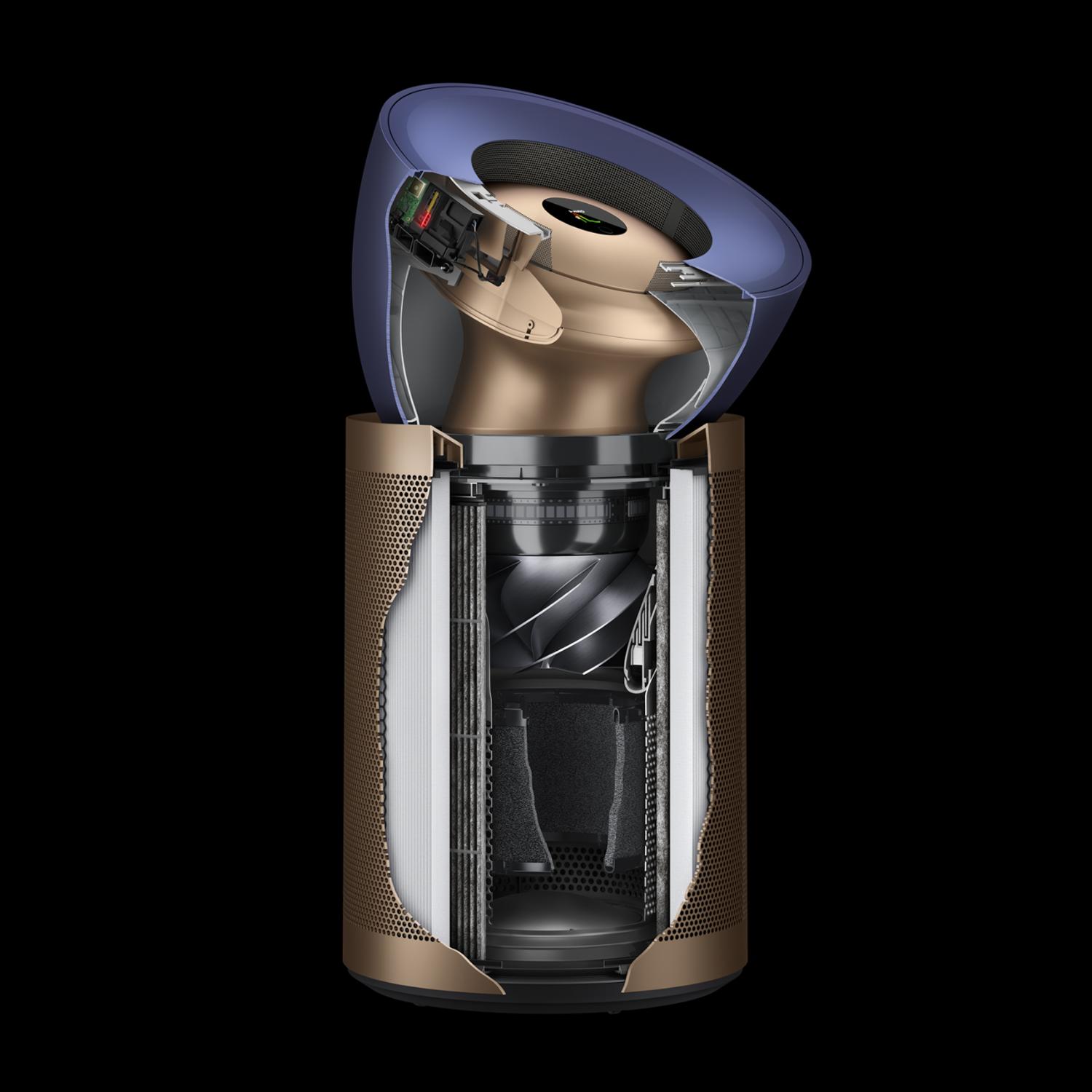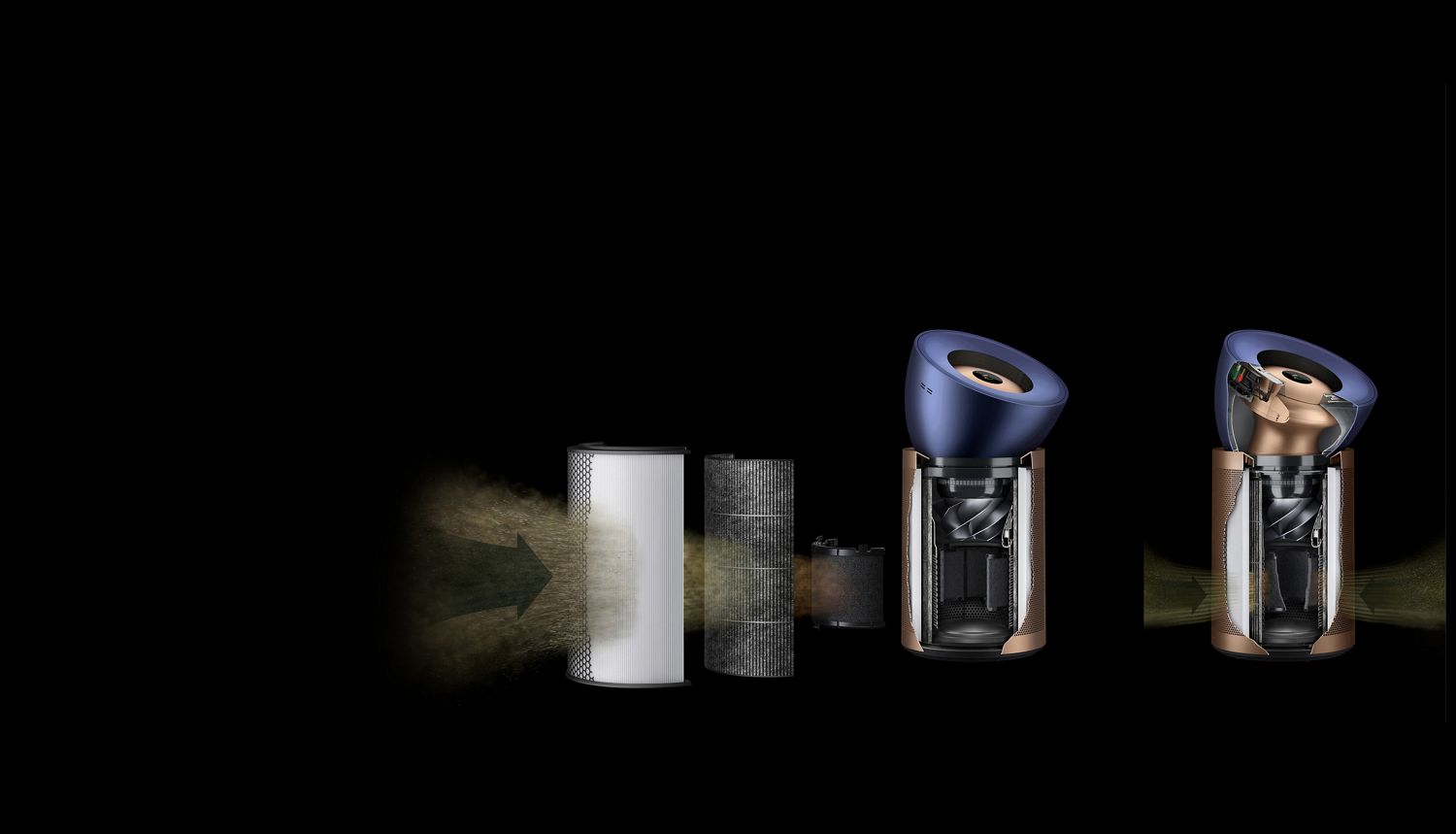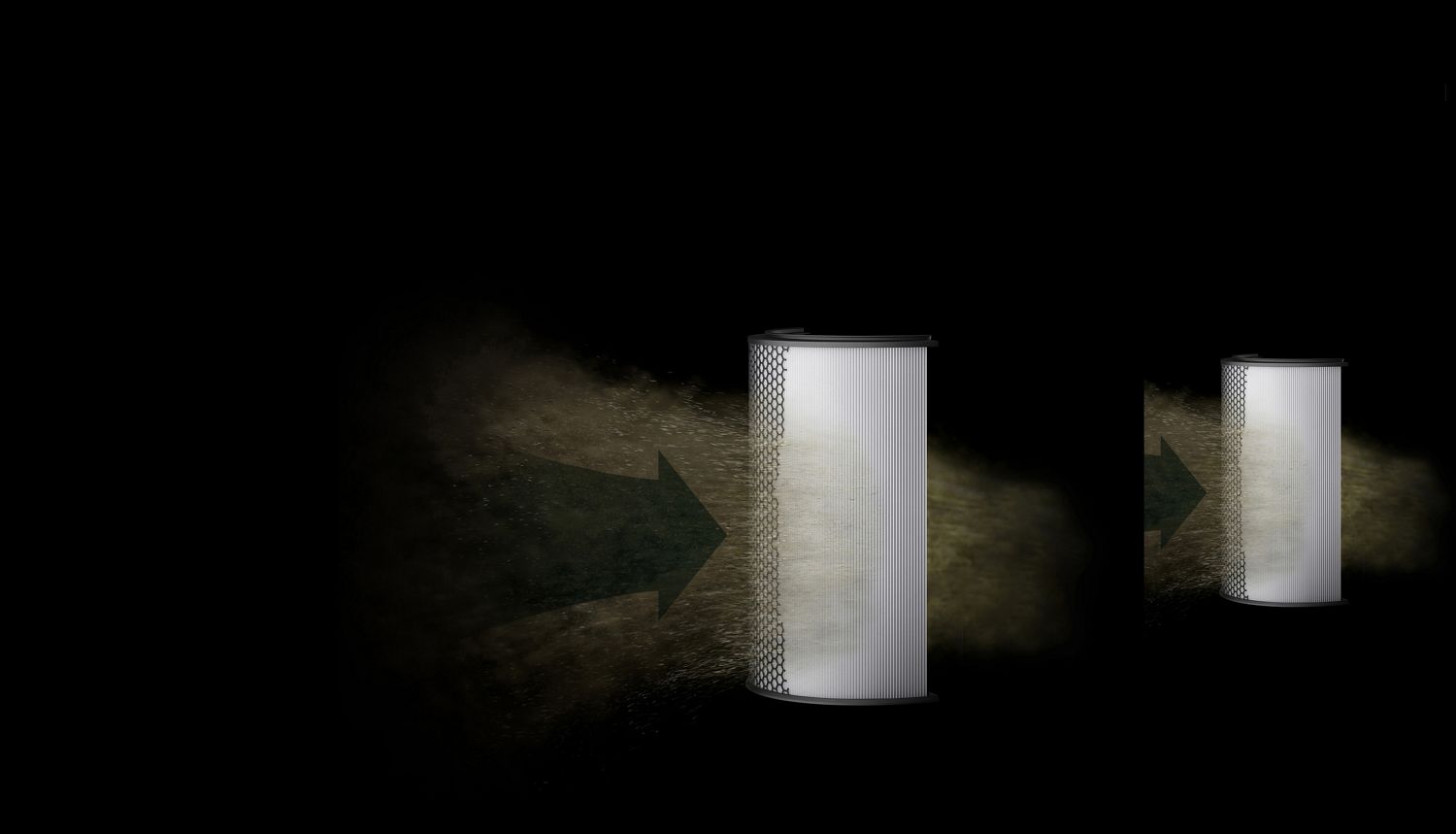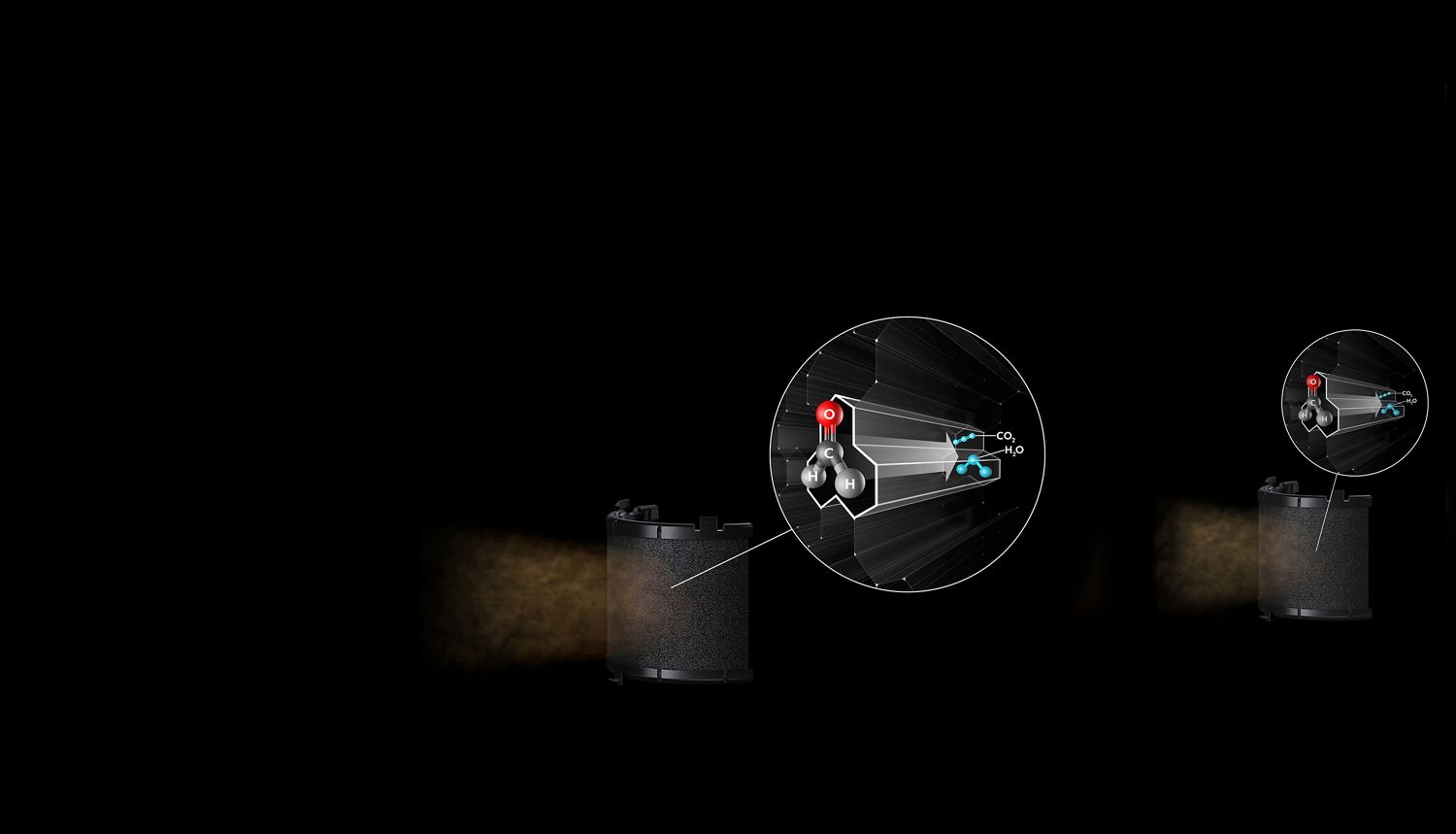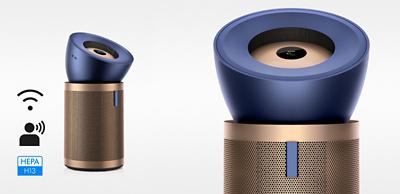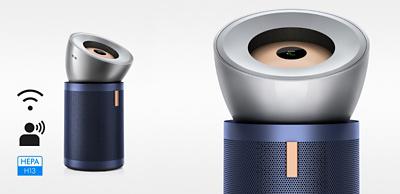
Projects air over 32 feet and purifies large spaces.¹ Quietly.
Our most advanced purifier removes pollutant particles, gases², odors and allergens* – for a healthier home environment.
Captures three times more NO₂, a common urban pollutant.⁴
Also destroys formaldehyde⁺ – emitted by some home furnishings.
And cools you³, when required.
Cone aerodynamics
This drives two high-velocity streams of purified air over the machine's dome, which coalesce into one powerful jet delivering more than 21 gallons of purified air per second. To purify large spaces¹, quietly. Or cool you, when required.³
Sensing. Filtration. Projection.
Three essentials to look for in an air purifier

Real-time air quality diagnosis
In Auto mode, our integrated sensors detect pollutants from around the room and analyse air quality in real time, cross-checking the data every second, then automatically trigger purification, if required.
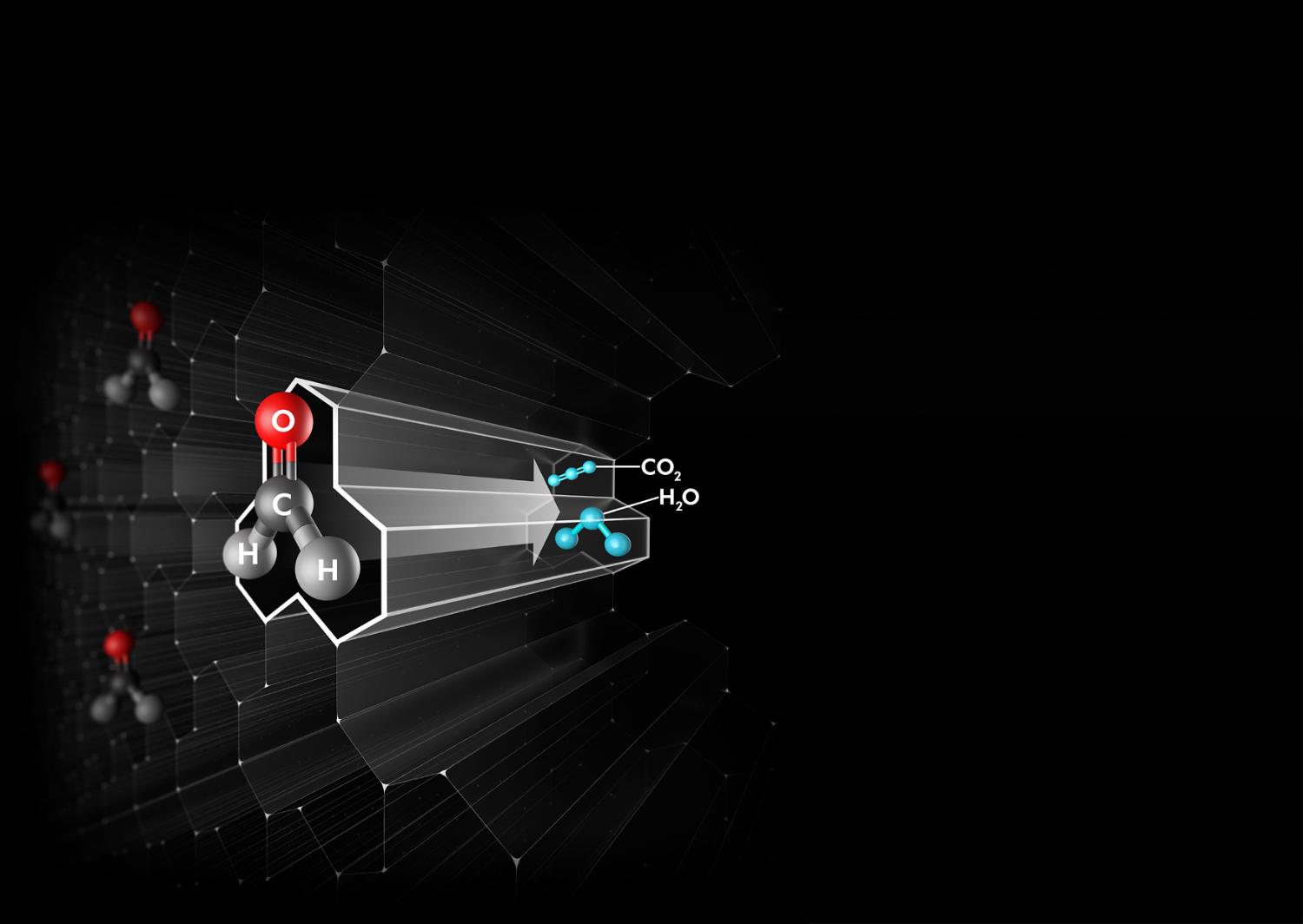
-
Formaldehyde: the invisible indoor pollutant
Formaldehyde is often associated with the familiar smell of fresh paint, or the unboxing of new furniture. It's a colorless, flammable and potentially harmful gas used in some building materials and household products. Sources can include fabrics found in flooring and furniture, glues, paints, varnishes, air fresheners, and household cleaners.
-
How to maintain cleaner air during home renovations
Moving and home makeovers involve new furniture and paint, which could add to the levels of formaldehyde in your home. Here's how to maintain cleaner indoor air when moving, decorating or renovating.

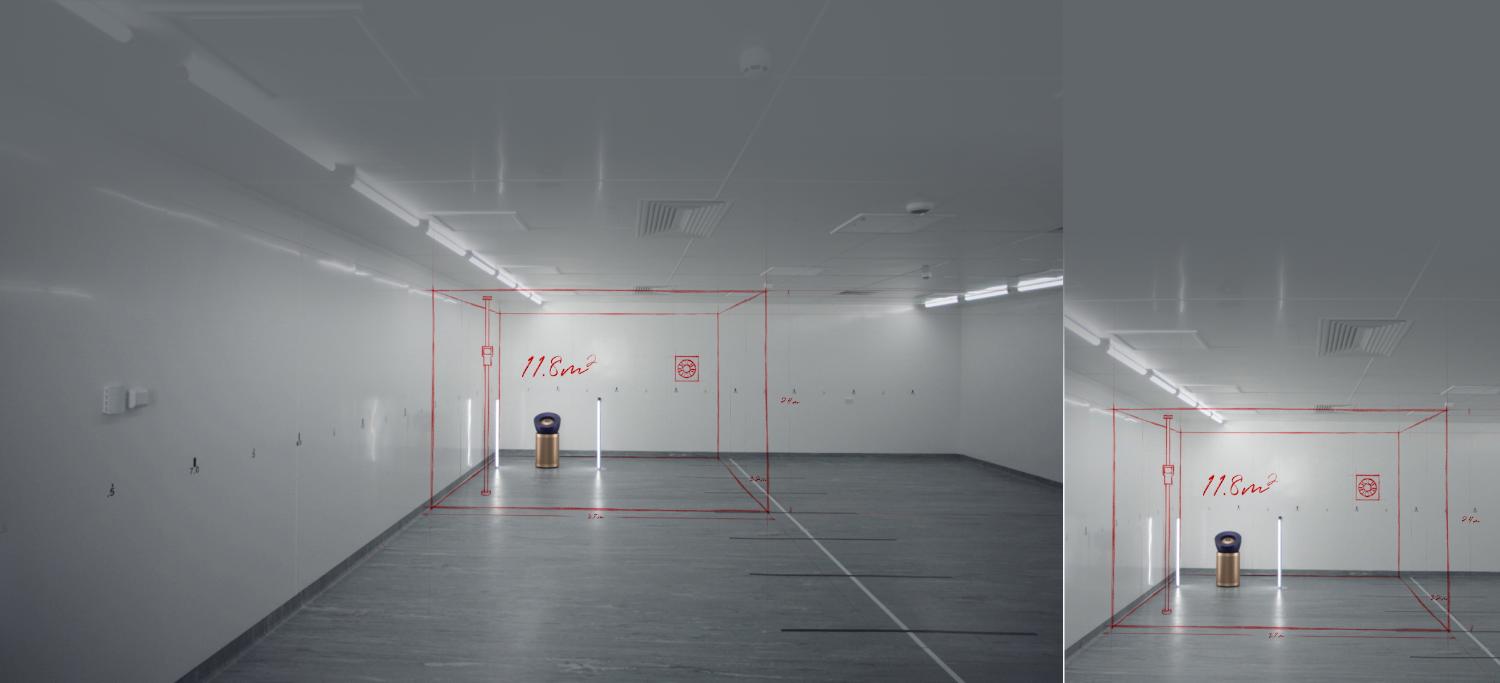




Get more with the MyDyson™ app▴
Discover what you get with the app.
-
Expert guides
Learn how to improve your indoor environment.
-
Machine upgrades
See how to upgrade to the latest Dyson technology.
-
Priority access
Latest Dyson technology and events.
-
Exclusive offers
Gain access to exclusive offers through the app.
-
-
Choose your model

Frequently asked questions
While our current generation purifiers circulate clean air around the whole room¹, the Dyson Purifier Big+Quiet projects air over 32 feet, creating the circulation power purifying large spaces.¹ Featuring our largest ever filtration system, the purifier captures 99.95% of ultrafine particles. It’s also acoustically engineered to operate quietly – even at its highest power setting.
We've tested the Dyson Purifier Big+Quiet extensively – to ensure the sensors, filtration system and motor work together to purify a large living space. It has the projection power to reach up to 32 feet.¹
We’ve re-engineered the Big + Quiet to deliver three key features to purify large spaces.¹ Long range projection creates the circulation power to draw even-distant pollutants back to the purifier. Our integrated sensor system detects and reports pollutants from around the room. Finally, three phases of purification sit within the machine, full sealed to HEPA H13 grade.⁹ Capturing gases², odors, ultrafine particles and destroying formaldehyde.⁺ Purified air is then projected back into the room and the cycle repeats.
Formaldehyde is a colorless and potentially harmful gas found in some household furnishings and products. Sources of formaldehyde include woods, glues, paints, varnishes, air fresheners, mattresses, household cleaners, and some fabrics found in household flooring, carpets and furniture. Formaldehyde can continue to be emitted for years, which means the gas can build up in your home. The Dyson Purifier Big+Quiet Formaldehyde range features a lifetime Selective Catalytic Oxidation (SCO) filter which traps formaldehyde in tunnels, breaking it down into water and CO₂. and never needs to be replaced.⁺
Dyson purifiers perform at an optimal level when used in Auto mode. This mode means the purifier will constantly monitor your air quality, automatically sensing and capturing pollutants. It will adjust airflow speed, and only purify or use energy when it’s necessary. The Dyson Purifier Big+Quiet range offers enhanced energy efficiency, providing nearly double the clean air delivery rate per watt, compared to our current generation of purifiers.
-
Allergens
An allergen is a substance that can cause an allergic reaction by triggering the body’s immune system. Common indoor allergens include pet dander and pollen.¹⁰
-
Bacteria
Microscopic, single-celled organisms that can exist in their millions, in every environment. Not all bacteria are harmful, but some can have adverse effects, such as E. coli.¹⁰
-
Benzene
Benzene is colorless, flammable liquid produced by both natural and man-made processes. It’s a natural part of crude oil, gasoline, and cigarette smoke. Indoors, it comes from products such as glues, paints, furniture wax, and detergents.
-
Carbon dioxide (CO₂)
A colorless greenhouse gas, which comes from the extraction and burning of fossil fuels. Increased CO₂ levels can impact cognitive function.
-
Formaldehyde
This colorless, flammable gas is used in some building materials and household products. Sources can include some fabrics found in flooring and furniture, glues, paints, varnishes, air fresheners, and household cleaners.
-
HEPA 13
HEPA (High Efficiency Particulate Air) is an air filter efficiency standard and a measure of a filter’s performance. To achieve this standard, filters must meet a minimum of 99.95 per cent particle removal at the most penetrating particle size.
-
Humidification
A process of increasing air moisture content through the addition of water vapor or steam. Humidifiers can add moisture to the air in dry conditions, creating a more comfortable indoor environment when needed.
-
Microns
Airborne particles are usually described in microns. One micron is equal to one-millionth of a meter. The human eye can see debris and dust that are approximately 25 microns in size.
-
Nitrogen dioxide (NO₂)
Nitrogen dioxide is a liquid below 70.2°F and a gas at higher temperatures. It is toxic to humans in both states in high concentrations. Gas stoves and space heaters are the most common indoor sources of NO₂ emissions. Other sources include improperly vented furnaces and water heaters.
-
Pet dander
Pet dander is made up of tiny particles of skin, saliva and urine, shed by animals with fur or feathers. Pet dander lingers in the air before settling on surfaces such as furniture, bedding, and fabrics. Exposure to these airborne particles can trigger allergies.¹⁰
-
Particulate matter (PM)
Particulate matter contains microscopic solids or liquid droplets, measured in microns. Indoor PM can be generated through many day-to-day activities such as cooking, cleaning, and the burning of candles and fires.
-
Purification
The process of reducing unwanted contaminants. Air purification is intended to remove airborne pollutants. Depending on the method, air purification can remove dust, allergens, or viruses.10
-
Volatile organic compounds (VOCs)
Volatile organic compounds are potentially harmful gases found in many household products. Common sources include paints, varnishes, air fresheners, cosmetics, and cleaning products.
-
Pollen
Pollen is a powdery substance released from seed plants as part of their reproduction process. It typically appears from trees in the spring, grasses in the summer, and weeds in the autumn. Pollen grains are among the most common allergens.¹⁰
-
Aspergillus mold
A common name for a visible group of fungi, mold thrives wherever there is dampness – sending out millions of spores into the air. Exposure to mold occurs via inhalation, skin contact, or ingestion.¹⁰
-
-

▴The MyDysonTM app is only compatible with select Dyson products. For a list of compatible products, please click here.
*Allergens refers to nonliving material.
**Tested with MS-2 bacteriophage virus aerosol, showing 99.9% reduction within 165 minutes. Tested with E. Coli bacteria aerosol, showing 99.9% reduction within 150 minutes. Tested on airborne Aspergillus niger mold spores, showing 99.9% reduction within 105 minutes.
⁺Third party full machine testing based on GB/T 18801-2015 formaldehyde cumulative clean mass testing with continuous injection until plateau of formaldehyde CADR is achieved. Results may vary in practice.
¹Testing for PM2.5 purification completed in a large testing chamber following relevant Dyson testing methods. Results may vary in practice.
²Gas capture rates may vary
³Fan; not air conditioning unit.
⁴Compared to adsorption by the standard carbon filter in Dyson Purifier Big+Quiet Formaldehyde (BP03).
⁵Requires device to run app, Wi-Fi or mobile data, Bluetooth 4.0 support, and iOS version 10 or Android version 5 (or above). Standard data and messaging rates may apply. Refer to the MyDyson app for compatible voice services.
⁶Levels selected based on scientific literature. Ventilation alert when CO2 levels are 1500ppm or above.
⁹Particle challenge by DEHS oil specified in EN1822 within a chamber specified in ASTM F3150.
¹⁰Not intended as a product claim. Refer to individual Dyson models for specific capture claims.






